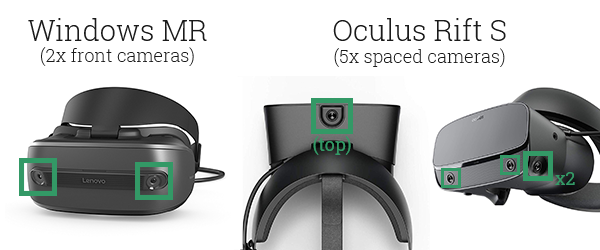Microsoft is killing its Windows Mixed Reality PC VR platform.
Despite the name, all Windows MR headsets were actually VR-only, and are compatible with most SteamVR content via Microsoft's SteamVR driver.
The first Windows MR headsets arrived in late 2017 from Acer, Asus, Dell, HP, Lenovo, and Samsung, aiming to compete with the Oculus Rift and HTC Vive that had launched a year earlier. They were the first consumer VR products to deliver inside-out positional tracking, for both the headset and controllers.
All the Windows MR OEMs but Samsung used the same cheap single-panel LCD design with fixed lenses, while the Samsung Odyssey had IPD adjustment and OLED panels - the same OLED panels that would be featured in HTC Vive Pro and Oculus Quest just under two years later.
But even though the LCD headsets were sold for as low as $200 at times, and even though Samsung offered (for the time) high-resolution OLED panels, Windows MR headsets failed to ever reach widespread adoption amongst PC VR gamers. On the Steam Hardware Survey Windows MR peaked at around 10% of SteamVR usage share, and now sits around 5%.
But why?
For starters, the tracking quality left much to be desired. While the Oculus Quest and most inside-out headsets since used four spaced-out cameras for a wide controller tracking volume, the Windows MR headsets had just two forward-facing cameras, severely limiting the range of hand actions that could be performed. HP's Reverb G2 added two extra side cameras, but by the time it launched in 2020 it was already too late for Microsoft's platform.

Another major problem was that the controllers weren't particularly ergonomic, and felt as if designed to be as cheap as possible. That was in stark contrast to Facebook's Oculus Touch and Valve's Index controllers, both beloved by their owners.
Essentially, Microsoft and its partners failed to give a compelling reason for many people to buy the first wave of Windows MR headsets, and by the time HP arrived with Reverb and its 2K panels Facebook's standalone Oculus Quest line had already started to dominate the VR hardware market.
The ability of Quest headsets to function in either standalone mode or PC VR mode made it the headset of choice for most buyers, despite being less comfortable than headsets like Reverb and having lower resolution.
Microsoft announced this week that Windows Mixed Reality is now officially deprecated, and will be "removed in a future release of Windows". This deprecation includes both the required Mixed Reality Portal application and the SteamVR driver. That means that when this removal happens, existing owners of Windows MR headsets will need to use older versions of Windows to continue using them.
In recent years Microsoft has shifted its XR focus to a software-based long term strategic partnership with Meta. It brought Xbox Cloud Streaming and its office suite to Quest this month, and plans to bring Windows 365 in future to stream a virtual full-fledged Windows 11 PC from the cloud for a subscription fee.
via Mint VR